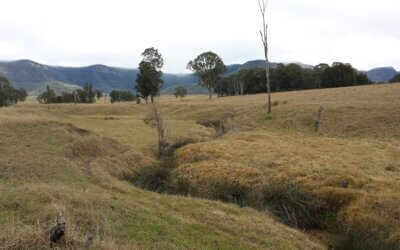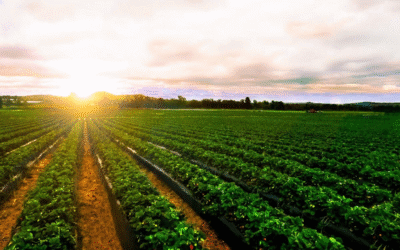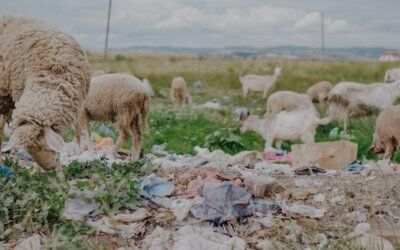Storytelling for soil: Engaging hearts to protect what’s beneath us
Soil speaks – sometimes through science, sometimes through story. In the Shahsavan lullabies of Iran, mothers reminded their children:
“Bread rises from the soil; do not treat it lightly”
“Earth is mother; if you wound her, her children will go hungry”
These verses carry timeless truth: soil is not just dirt beneath our feet, but the living foundation of our survival. It connects food, water, climate and culture. Yet when those connections are ignored, the web breaks down and people, communities, and ecosystems suffer.
Soil connectivity reflects the knowledge, actions, and attitudes people have toward a given soil. It asks us to see soil as more than a medium for crops: it is a partner in resilience, a keeper of memory, and a link that connects to our future.
Poor connectivity
When the connectivity between people and the soil on which their lives depend on is poor, soil becomes invisible. Practices such as overgrazing, heavy machinery, sealing land with concrete damage the living ground. The result is erosion, compaction, salinisation, and desertification.
The costs are immense:
-
-
- 52% of agricultural soils are already degraded
- By 2050, 1 billion people may be forced to migrate due to food and water scarcity
- Global land degradation could cost US$23 trillion lost economic output
-
These aren’t just numbers they tell of lost harvests, abandoned villages, and broken connections between people and the soils that sustain them.
Rebuilding the Web
Connectivity can be restored when people and soil are brought back together.
Indigenous Knowledge- Soil as a Living Relative
For indigenous people worldwide, soil has always been the centre of life. Indigenous practices remind us that soil is never isolated, but part of a living cycle of water, plants, animals, and people. For instance, among the Shahsavan communities of Iran, migration routes were chosen to minimize compaction, grazing was rotated to let soils recover, and campsites were placed with care so that fragile soils could heal. Rainfall was guided to infiltrate rather than run off, protecting both fertility and the water cycle. These traditions show a deep respect for the soil as a living relative and a source of resilience
When Awareness Becomes Action
Soil connectivity is more powerful when awareness spreads beyond science into society, and when people act together. The IUCN “Save Soil” campaign has shown how connectivity can move from science to society. In 2022, a global movement reached over 4 billion people through media, rallies, and community engagement. Millions of children wrote letters to leaders, 170+ cities proclaimed “Save Soil Day”, and governments began embedding soil health into river restoration and climate strategies. This case shows that connectivity can scale from individual farmers to entire nations, and awareness turns into action when connections are strong.
Measuring Connectivity in Practice
Recent research is finding ways to measure soil connectivity. New Tools allow farmers and land managers to assess their knowledge, attitudes, and practices, linking these responses to spatial soil data. The goal? To expose the “know–do gap”- when people understand soil issues but don’t always act on them.
In Australia, awareness about soil is high, but adoption of sustainable practices is limited. This creates opportunities to promote and incentivise soil security through regenerative farming support, carbon credits, and other targeted policies that help turn knowledge into action.
Looking ahead, the vision is global, where global soil communities are built around pedogenons unique soil types mapped across countries. Imagine farmers in Australia, India, and Brazil, all working on similar soils, sharing knowledge and solutions across borders. Connectivity, then, becomes a worldwide connection through soil.
From Awareness to Stewardship
Connectivity asks us to see soil as both science and story:
-
-
- As a scientific resource, storing carbon, filtering water, and producing food
- As a cultural foundation, rooted in traditions and spiritual life
- As a policy priority, requiring laws, incentives, and global agreements
-
Without connectivity, even the most fertile soils degrade in silence. With it, soils become bridges between generations, between knowledge systems, and between nations.
Conclusion: Those who know care, those who care lobby
Soil connectivity begins with knowledge. When people know, they start to care. And when they care deeply enough, they speak out, demand change, and push for better policies.
This is the power of storytelling for soil- engaging hearts to protect what’s beneath us, ensuring soil lives, and so do we.
Credit Photo: Mohammadreza Abbasi (2016). [Nomadic scene with Shahsavan shepherd and sheep] [Photograph]. Mehr News Agency.

by Thilini Jayasekara
PhD Candidate at the University of Sydney
Thilini holds a Bachelor’s degree in Agricultural Technology and Management from the University of Peradeniya, Sri Lanka, and a Master’s degree in Environmental Soil Science from the same university. She is currently pursuing her PhD at the University of Sydney. Her doctoral research focuses on how climate change affects soil indicators and functions, and how these impacts pose a threat to soil security.
Related Articles
Fast Food Thinking Won’t Fix Slow Soil Problems
We live in a world that craves speed. We expect food in minutes, messages in seconds, and results overnight. But when it comes to soil, this mindset collides with reality. Soil does not work on fast-food timelines. It takes centuries to form just a thin layer of soil,...
Beyond Yield: Refining the Focus of Modern Agriculture
For decades, agriculture was judged by one single metric: yield. How much could you grow? How many tonnes per hectare can you obtain? Farmers, researchers, and governments focused on pushing that number higher and higher. This relentless focus on production worked...
Empathy versus apathy: our perception of (micro)plastics in different environments
Close your eyes and think about plastic pollution for a moment. What environments come to mind? What animals affected do you visualise? I would guess that most of us probably think of polluted oceans. Images of beaches with plastic bottles and bags, fish and...



